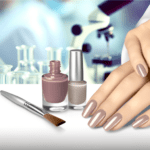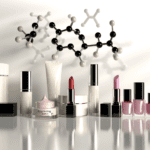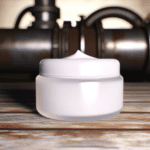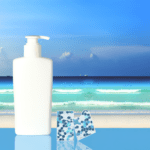Introduction to Aminophenol and Hair Dyes
What is Aminophenol?
Aminophenol is a chemical compound that belongs to the family of aromatic amines, which are organic compounds characterized by an amino group attached to a phenol ring. It is synthesized through the reduction of nitrophenols and serves as a primary intermediate in the production of various dyes, including those used in hair coloring products. Aminophenols are known for their ability to undergo oxidation reactions, forming imines that react with coupling agents to create the desired dye colors.
Prevalence of Aminophenol in Hair Dyes
The use of aminophenol in hair dyes is widespread due to its effectiveness in achieving a variety of shades. It is a key ingredient in many oxidative hair dye formulations, which are designed to provide long-lasting color. Aminophenol derivatives, such as p-methylaminophenol and 2-methyl-5-hydroxyethylaminophenol, are commonly found in hair dye products at concentrations regulated to ensure safety. Despite these regulations, the presence of aminophenol in hair dyes raises concerns about potential health risks associated with its use.
The Appeal of Hair Coloring
Hair coloring has become an integral part of personal grooming and fashion for many individuals. The desire to cover gray hair, experiment with new looks, or express one’s personality through hair color drives the popularity of hair dyes. The market offers a plethora of options, from subtle natural tones to bold, vibrant hues, catering to a diverse consumer base. The ability to change one’s appearance with relative ease and the psychological benefits of feeling more attractive and confident contribute to the appeal of hair coloring.
Purpose of the Blog Post
The purpose of this article is to shed light on the toxic reality behind the use of aminophenol in hair dyes. While hair coloring products are widely used and enjoyed by many, it is crucial to understand the potential health risks that ingredients like aminophenol may pose. This article aims to inform consumers about the chemical properties of aminophenol, its prevalence in hair dyes, and the associated health concerns. By exploring regulatory perspectives, natural alternatives, and detoxification strategies, we seek to empower readers to make informed decisions about their hair coloring choices and advocate for safer, more transparent beauty products.

Do you have the most commonly used but toxic, disease bringing chemicals in your skin care? Many chemicals in skincare are hormone disruptors and make menopause symptoms worse.
Find out more…
The Chemistry of Aminophenol
Chemical Properties and Uses
Aminophenol is a compound that belongs to the family of aromatic amines, which are characterized by an amino group attached to a phenol ring. This structure allows aminophenols to act as intermediates in the synthesis of various dyes, including those used in hair coloring products. Aminophenols are synthesized through the reduction of nitrophenols and are known for their ability to undergo oxidation reactions, forming imines that can react with coupling agents to produce vibrant colors.
How Aminophenol Works in Hair Dye
In the context of hair dyes, aminophenol plays a crucial role as a primary intermediate. When mixed with an oxidant, usually hydrogen peroxide, aminophenol undergoes a chemical reaction that leads to the formation of new compounds. These new compounds then combine with other molecules, known as coupling agents, to create the final dye molecules that impart color to the hair. This process is essential for the development of permanent and some semi-permanent hair dyes, as the resulting color is designed to withstand multiple washings.
Risks Associated with Chemical Exposure
Despite its widespread use in hair dye formulations, aminophenol poses several health risks. Skin and eye irritation are common side effects, and there is evidence to suggest that aminophenol can cause allergic contact dermatitis, a delayed hypersensitivity reaction. Furthermore, studies have indicated that aminophenol and its derivatives may have mutagenic properties, meaning they could potentially cause genetic mutations. The compound has also been associated with the formation of methemoglobin, an altered state of hemoglobin that can lead to decreased oxygen delivery to tissues.
Moreover, the process of dyeing hair often involves cutaneous absorption, where compounds like aminophenol can penetrate the skin barrier and enter the bloodstream. This systemic exposure raises concerns about the potential for more severe health effects, including hormonal disruption and carcinogenicity, which have been observed in animal studies with related aromatic amines. While direct evidence of such effects in humans from aminophenol exposure is limited, the possibility of long-term health risks cannot be dismissed, especially considering the cumulative effect of repeated exposure over time.

Popular Read: Endocrine Disruptors in Skincare: What You Need to Know
Health Concerns Linked to Aminophenol
Potential Toxicity and Side Effects
Aminophenol, a common ingredient in hair dyes, has been associated with various health concerns due to its potential toxicity. Exposure to aminophenol can lead to skin irritation, ocular irritation, and an increased rate of methemoglobin formation, which affects the blood’s ability to carry oxygen. Additionally, there is evidence of mutagenicity, which suggests that aminophenol can cause genetic mutations. The compound’s ability to induce allergic contact dermatitis is also a significant concern, as it can lead to hypersensitivity reactions upon skin contact.
Research on Hormonal Disruption
Studies have indicated that aminophenol and related compounds may act as endocrine disruptors. These substances can interfere with the body’s hormonal systems, potentially leading to adverse developmental, reproductive, neurological, and immune effects. For instance, certain aminophenols are suspected of disrupting thyroid hormone synthesis, which is critical for metabolism and growth regulation.
Connection to Cancer Risks
The carcinogenic potential of aminophenol has been a subject of debate. While some aminophenol compounds have not shown evidence of carcinogenicity, others, such as those structurally related to 4-methoxy-m-phenylenediamine, have been reported to exhibit animal carcinogenicity. The International Agency for Research on Cancer (IARC) has classified occupational exposure to hair dyes as a probable human carcinogen, particularly noting an increased risk of bladder cancer among hairdressers and barbers due to their exposure to these chemicals.
Impact on Aging and Menopause
Exposure to aminophenol may also have implications for aging and menopause. Oxidative stress, which has been linked to the use of hair dyes containing aminophenol, is known to accelerate the aging process. This stress can lead to shortened telomeres in cells, which are associated with aging and age-related diseases. Furthermore, hormonal disruptions caused by aminophenol exposure could potentially influence the onset and progression of menopause, although more research is needed to fully understand these effects.
In conclusion, while the use of aminophenol in hair dyes provides the desired aesthetic results, it is imperative to consider the potential health risks associated with its use. Consumers and professionals alike should be informed about the toxicological properties of aminophenol and its potential impact on human health, particularly concerning hormonal disruption, carcinogenic risks, and the implications for aging and menopause.
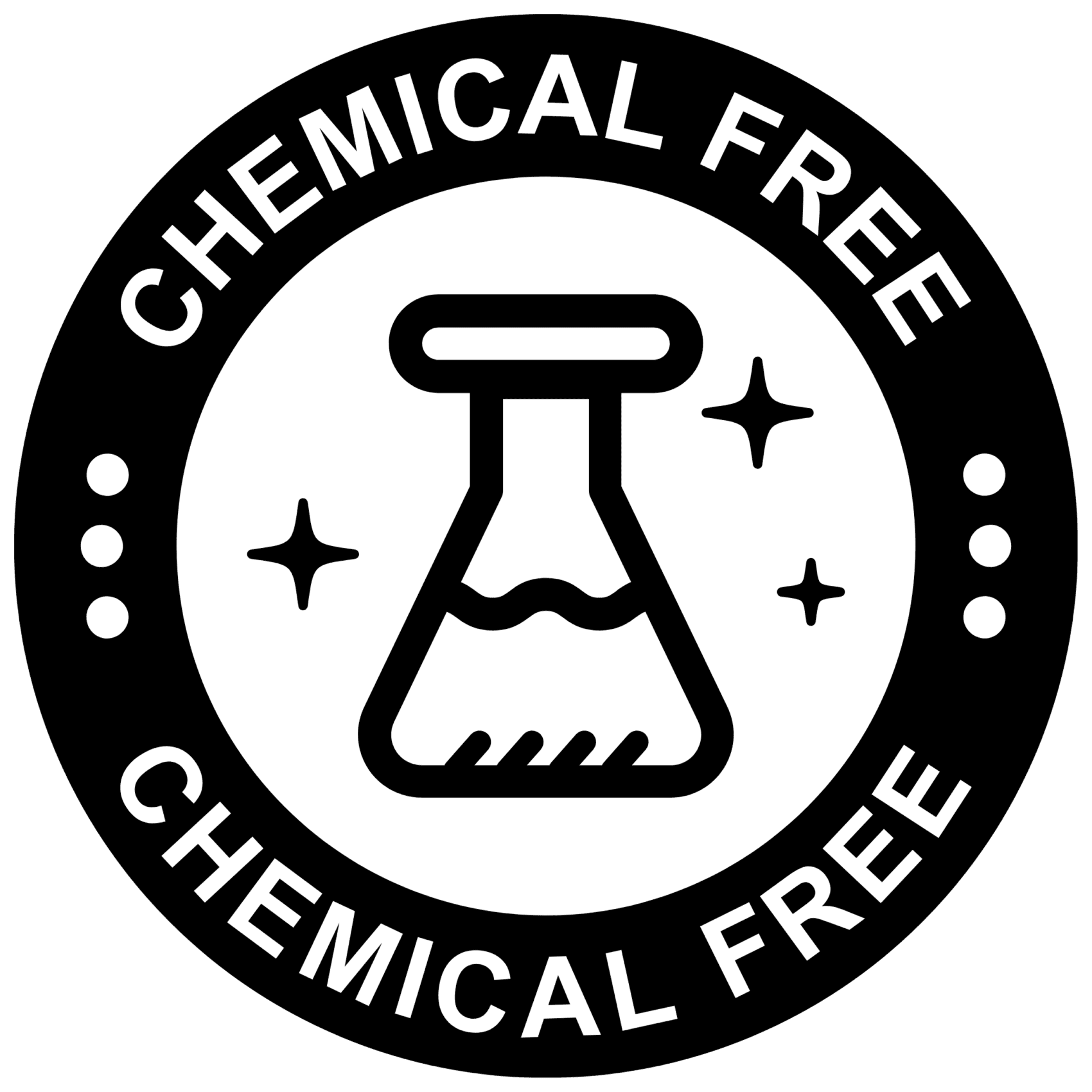
Doubting chemicals in skincare and femcare? Well done! Choose chemical-free products whenever possible.
Regulatory Perspective on Aminophenol
Standards and Regulations in North America
In North America, the regulation of chemicals used in hair dyes, including aminophenol, is primarily overseen by the Food and Drug Administration (FDA) in the United States and by Health Canada in Canada. The FDA does not require approval of hair dye ingredients before they go to market, but it does monitor the safety of these products once they are for sale to consumers. The FDA can take action if a product is found to be unsafe, misbranded, or not in compliance with the law. Health Canada, on the other hand, categorizes hair dyes as cosmetics and requires a Cosmetic Notification Form for each product before it is sold. Both countries have specific regulations regarding the maximum allowable concentrations of certain chemicals in hair dyes to minimize potential risks to consumers.
How Regulations Affect Product Safety
Regulations play a crucial role in ensuring the safety of hair dye products. By setting maximum allowable concentrations for ingredients like aminophenol, regulatory agencies aim to limit exposure to potentially harmful chemicals. For instance, the FDA has set concentration limits for certain aminophenol compounds in hair dyes to reduce the risk of skin irritation and other adverse effects. These regulations are based on scientific evidence and toxicological data, which help to establish safe levels of chemical exposure. Manufacturers are required to adhere to these standards and may conduct additional safety testing to ensure compliance and consumer protection.
The Role of Consumer Advocacy
Consumer advocacy groups play a significant role in the regulatory landscape by pushing for stricter safety standards and greater transparency in the cosmetic industry. These organizations often review scientific literature, report adverse reactions, and petition regulatory bodies to take action on hazardous chemicals. Their efforts can lead to increased awareness among consumers and policymakers, potentially resulting in more stringent regulations or voluntary reformulations by manufacturers. Advocacy groups also encourage consumers to make informed decisions by providing resources and education on the ingredients found in personal care products, including hair dyes containing aminophenol.
Natural and Safer Alternatives to Aminophenol
Herbal and Plant-Based Dyes
For those seeking to avoid the toxic effects of aminophenol and other harsh chemicals found in conventional hair dyes, herbal and plant-based dyes offer a natural alternative. These dyes are derived from a variety of plants, such as henna, indigo, and chamomile, which have been used for centuries to impart color to hair. Unlike synthetic dyes, these plant-based options do not penetrate the hair shaft deeply; instead, they coat the hair, providing a layer of color that is less damaging.
Benefits of Natural Hair Dye Ingredients
The benefits of using natural hair dye ingredients are numerous. Firstly, they are free from harsh chemicals such as ammonia, peroxide, and heavy metals, which can cause skin irritation, allergic reactions, and long-term health issues. Additionally, natural dyes often contain conditioning properties that can improve hair health, leaving it shiny and soft. They are also environmentally friendly, as they are biodegradable and do not contribute to pollution. Moreover, for those with sensitive skin or allergies, natural dyes are less likely to cause adverse reactions.
How to Choose Safer Hair Dye Products
When selecting a safer hair dye product, it is essential to read the ingredient list carefully. Look for products that are labeled as “100% organic” or “all-natural” and be wary of misleading terms such as “ammonia-free” or “PPD-free,” which may still contain other harmful substances. It is also advisable to perform a patch test before using the dye to ensure that there is no allergic reaction. Additionally, consider consulting with a professional who specializes in natural hair care for personalized advice. Lastly, be mindful of the Environmental Working Group’s (EWG) Skin Deep Database, which rates the safety of personal care products based on their ingredients.
In conclusion, while the allure of changing one’s hair color is strong, it is possible to achieve beautiful results without compromising health and safety. By opting for herbal and plant-based dyes and being diligent in product selection, individuals can enjoy a vibrant hair color and peace of mind.
Do you know the 3 main ways how your body is exposed to harmful chemicals, which affect your hormones, your thyroid, health and beauty?
If not, it may be time to learn about them. It takes about 1-2 minutes.
We have a few suggestions how to avoid these silent health and immune system killers in our new guide.
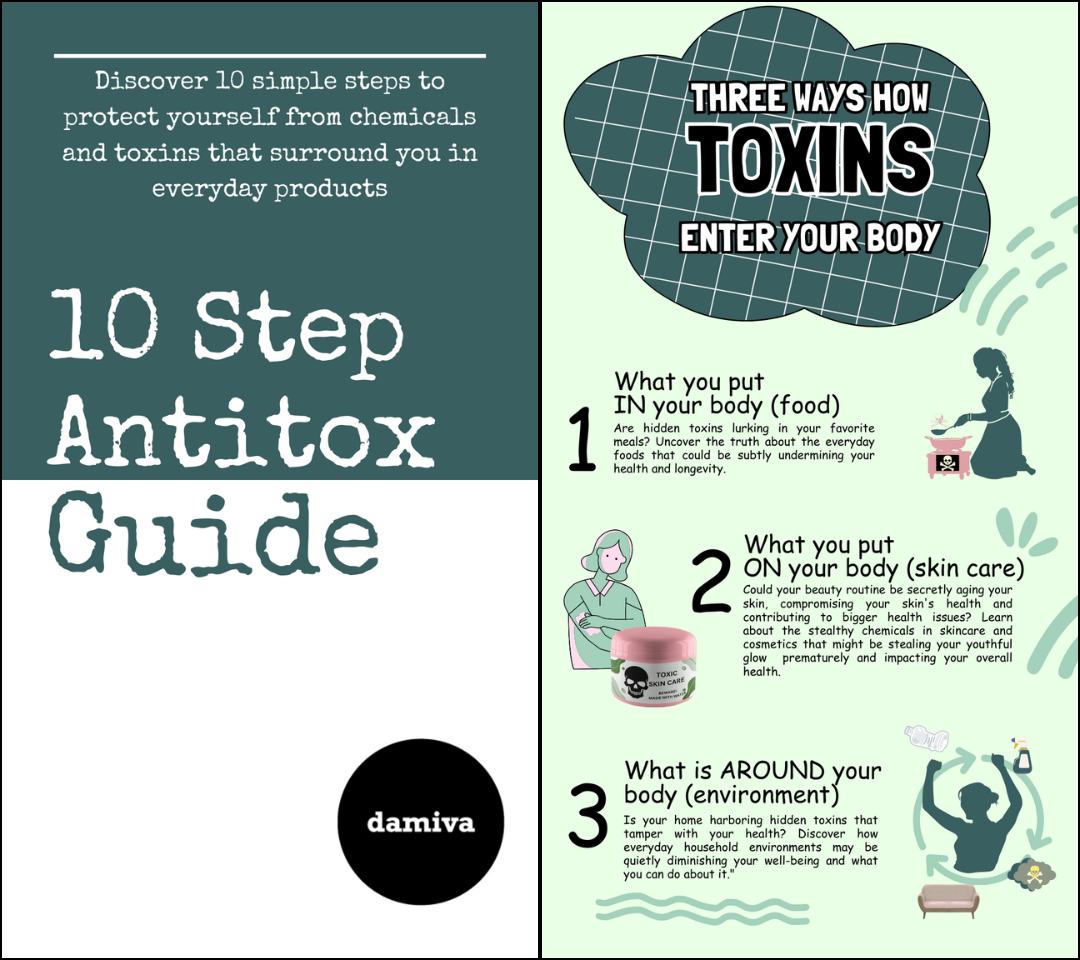
Detoxifying from Chemical Exposure
Strategies for Reducing Chemical Load
Reducing chemical load begins with awareness and conscious choices. Here are some strategies to minimize exposure to harmful chemicals found in hair dyes:
- Read Labels: Always check product labels for aminophenol and other toxic chemicals. Opt for products with fewer and more natural ingredients.
- Limit Use: Decrease the frequency of hair dye applications to reduce the cumulative effect of chemical exposure.
- Protective Measures: Use gloves and ensure proper ventilation when applying hair dyes to minimize skin contact and inhalation of fumes.
- Spot Testing: Perform a patch test before using a new hair dye to check for allergic reactions or skin sensitivities.
Detoxification Methods and Their Efficacy
Detoxification methods aim to eliminate toxins from the body. While there is no one-size-fits-all solution, some approaches may help support the body’s natural detoxification processes:
- Hydration: Drinking plenty of water can help flush out toxins through the kidneys.
- Dietary Choices: Consuming a diet rich in antioxidants, vitamins, and minerals can enhance the liver’s detoxification abilities.
- Exercise: Regular physical activity increases circulation and promotes sweating, another way the body eliminates toxins.
- Saunas: Using a sauna can induce sweating and may assist in the removal of toxins through the skin.
It’s important to note that while these methods can support overall health, their direct impact on detoxifying specific hair dye chemicals may vary and is not always scientifically proven.
Lifestyle Changes for a Chemical-Free Life
Adopting a lifestyle that minimizes chemical exposure can have long-term health benefits. Consider the following changes:
- All-Natural, Chemical-Free Personal Care Products: Choose chemical-free, all-natural personal care products, including hair dyes, to reduce exposure to synthetic chemicals.
- Home Environment: Use natural cleaning products and avoid synthetic air fresheners to maintain a toxin-free home atmosphere.
- Food Choices: Opt for organic foods to avoid pesticides and chemicals used in conventional farming.
- Educate Yourself: Stay informed about the chemicals in everyday products and their potential health effects.
Little known Secret: How to Choose Safe Skin Care? Pick Water-free!
For a safe option, consider water-free skincare products as water-free products can be created without harmful chemicals.
Skincare that contains water requires preservatives such as alcohol, parabens, and other chemicals to inhibit the growth of bacteria and microbes, given that water is a conducive environment for bacteria. The water-free skincare line of Damiva is a line of patented chemical-free, water-free products that are long-term safe.
By making informed choices and advocating for safer products, individuals can significantly reduce their chemical load and contribute to a healthier environment.
Conclusion: Empowering Choices for Health and Beauty
Summarizing the Toxic Reality
The journey through the world of hair dyes has unveiled a concerning landscape where aminophenol and its chemical cousins often hide behind the allure of youthful radiance and vibrant color. Despite the appeal of changing one’s hair color, the toxic reality is that many of these products contain ingredients that pose potential risks to our health. From hormonal disruptions to increased cancer risks, the evidence suggests that the quest for beauty may come at a significant cost.
Making Informed Decisions
Armed with knowledge, consumers can make empowered choices about their hair care. It is crucial to scrutinize product labels, understand the implications of the ingredients, and weigh the aesthetic benefits against the health risks. Opting for hair dyes with fewer synthetic chemicals or exploring natural alternatives can be a safer path. Moreover, considering the frequency of use and the potential for cumulative exposure is essential for those who regularly color their hair.
Advocating for Transparency and Safety
While personal choices play a significant role, there is also a collective power in advocating for greater transparency and safety in the beauty industry. Supporting brands that prioritize health and the environment, demanding clearer labeling, and pushing for stricter regulations can drive change. By voicing concerns and choosing products that align with health-conscious values, consumers can influence the market and help ensure that beauty does not come at the expense of well-being.
In conclusion, while the allure of hair dyes is undeniable, it is imperative to approach them with caution. By understanding the toxic reality, making informed decisions, and advocating for transparency and safety, individuals can navigate the complex world of hair care with confidence. The power to choose health and beauty is in our hands, and by exercising this power wisely, we can protect ourselves and inspire a more responsible beauty industry.



